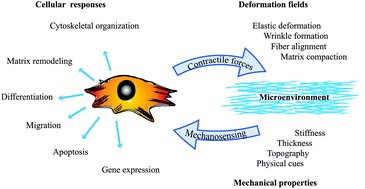Impact of elastic and inelastic substrate behaviors on mechanosensation
Abstract
In this review we summarize current data on the mechanics of synthetic and naturally occurring biopolymers that are routinely employed in examination of contractility and cellular mechanosensation. We discuss the effect of physical boundaries on the mechanical behaviors of cell substrates and cellular mechanosensation. The application of contractile forces to underlying substrates enables anchorage-dependent cells to probe the physical properties of their microenvironment. Compliant substrates deform as a result of contractile forces generated by adherent cells and, in turn, the mechanical response of substrates influences numerous cellular processes. Unlike synthetic polymers that exhibit linear elastic responses to forces applied by adherent cells, naturally-occurring biopolymers exhibit non-linear, viscoelastic behavior. In turn, the viscoelastic behavior of fibrillar biopolymers may contribute to irreversible network compaction after application of cell-derived forces. Comprehensive characterization of the unusual mechanical properties of extracellular matrix proteins like collagen has provided novel insights into cell contractility and mechanosensation. We suggest that in the future, fabrication and application of novel substrates with fibrillar structures and non-linear viscoelastic behavior will be needed for a better understanding of the role of mechanosensation in many physiological and pathological processes.


 Please wait while we load your content...
Please wait while we load your content...